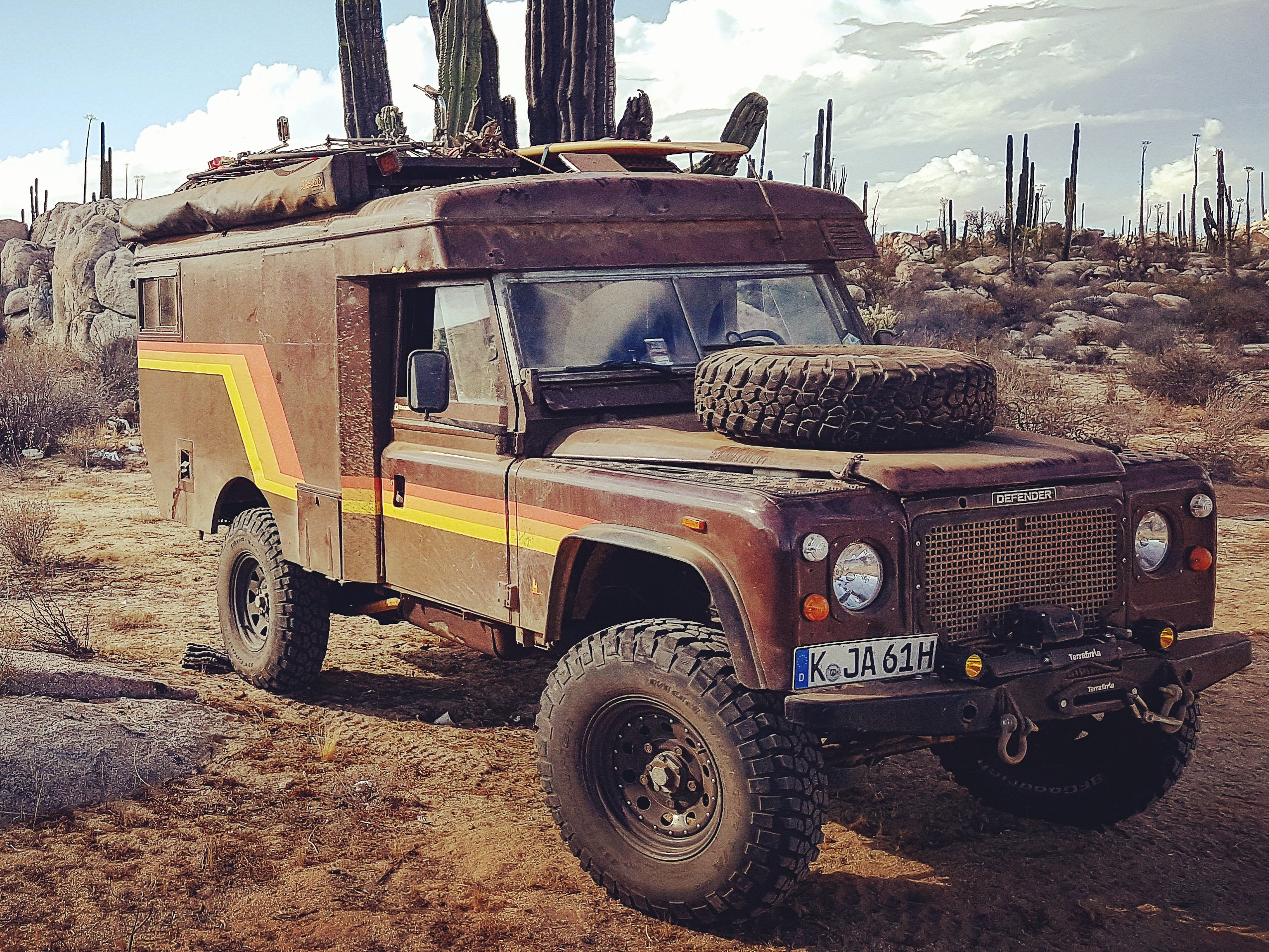Purists look away; Jannis Josten is in the house! Josten is one of the most talented, ingenious, ambitious, and outright mad engineers I’ve ever met. He’s also the owner of today’s featured vehicle, a BMW-powered 1987/1997 Defender, featuring a 1969 Land Rover Series II ambulance body and a suspension setup that would make Dakar drivers blush.
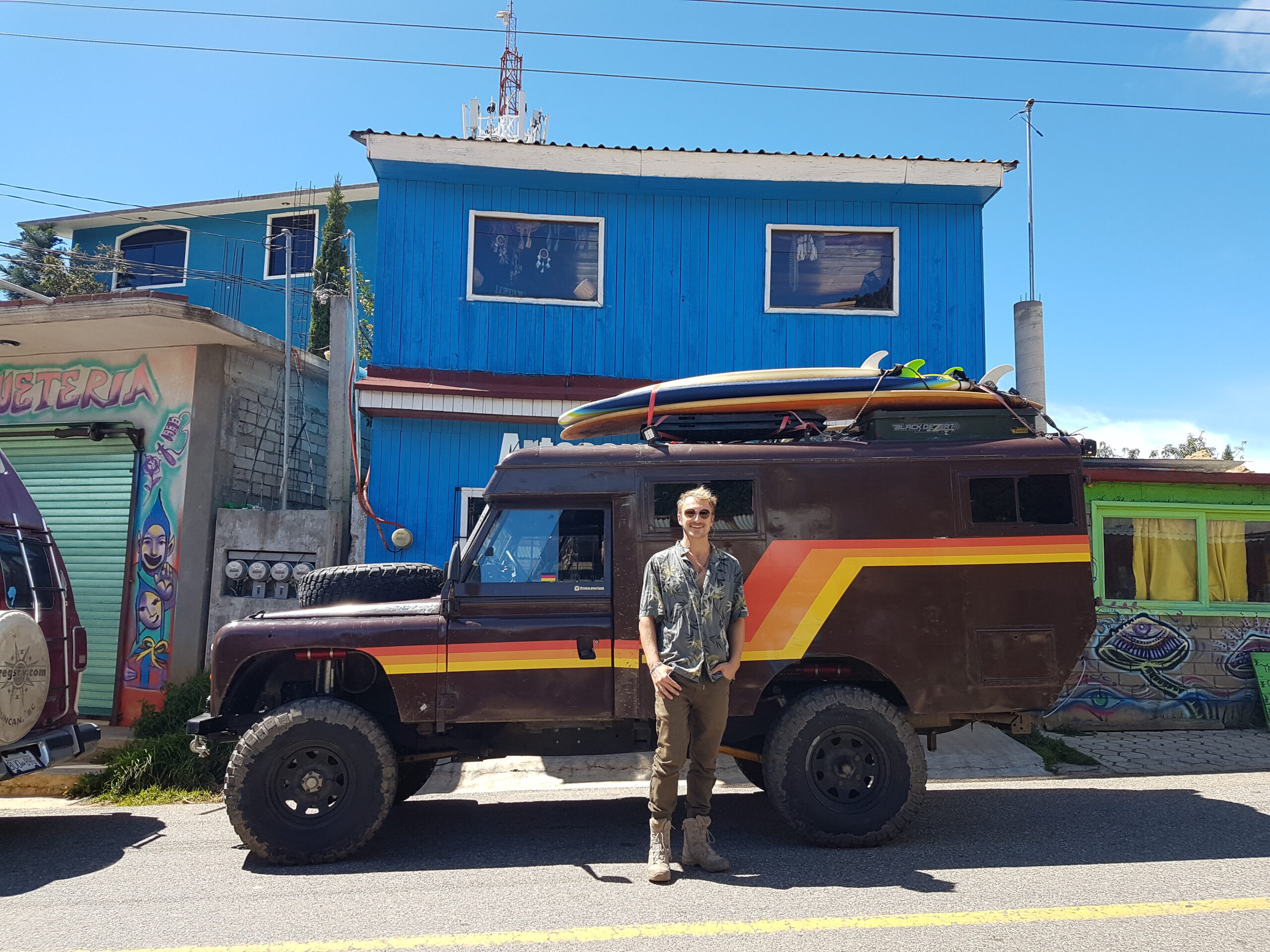
I think it’s safe to say that most individuals planning an extensive international overland adventure borderline on the overprepared, and the vehicle and equipment are meticulously fine-tuned and tested months in advance. Jannis, on the other hand, took a slightly different approach, shipping the vehicle from Germany to South America before it was even finished. As someone who preaches the benefits of keeping a vehicle stock, works tirelessly on preventative maintenance, and won’t drive to the end of the road without a thorough service, I was a nervous wreck listening to Jannis’ story. “I tell you, Jack, it was proper crazy…who does this?!” Yet, throughout our interview, I was blown away by Jannis’ mechanical aptitude, somehow keeping this build going despite “over 150 breakdowns.” Finally, despite its teething issues and “the wrong engine for the job,” the Defender proved to be an overlanding monster and a vehicle that has even bigger adventures on the horizon. Hence, without further ado, let’s venture into the world of Doctor Defender, Jannis Josten, and take a look at one of the coolest Land Rovers I’ve ever seen.
Can you tell me a little about yourself?
I’m from Germany, and before my travels, I was an engineer at Ford Motor Company (they have their development HQ here in Koln) for nine years. It was a great job with lots of fascinating engineering and fun test driving, but then the quarter-life crisis hit! I had finished my studies, gone straight into a job, worked up to a good position, and, despite being comfortable, had reached a point where I was asking myself, Is this it, my life? I wanted more. I quit my well-paid job in the pursuit of travel and adventure.
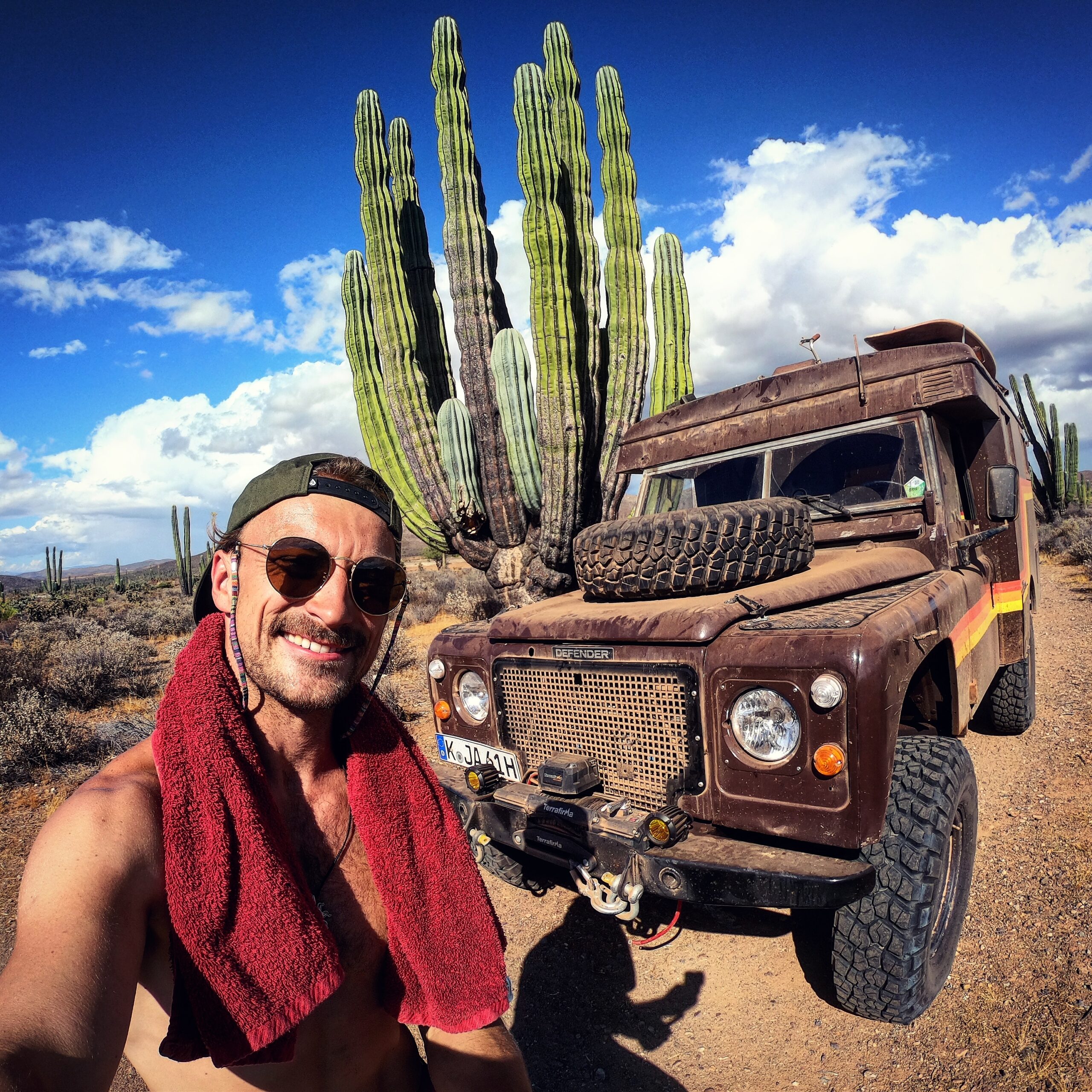
When did your love of overland travel begin?
My passion for overlanding was first ignited at six years old watching Camel Trophy advertisements on TV with my grandpa. That obsession stayed with me growing up, and at 21, I got my first Land Rover. The original plan, inspired by Camel Trophy, was to do a camper conversion and head out on an African expedition, but that didn’t happen. Instead, I was side-tracked by off-road racing and began converting my Defender into an amazing race truck for amateur “Dakar” style rallies. This pursuit provided a huge amount of experience, which has been super helpful for overland travel. I modified the entire car and fitted a BMW engine. During this four-year period, I learnt so much about off-road suspension, and in Thailand organised a visit to the Profender factory. It’s actually a funny story because we’d told them we loved the products (we were running their shocks on our rally car) and just wanted to look around, but it was lost in translation, and they thought we were some bigshot overseas customers. Completely unaware, we got this huge tour and were shown every step of the manufacturing process until we ended up in this big board room with some serious people and had to explain what had happened. However, when we returned to Germany, we figured why not import these shocks. We knew they were amazing quality, and now we had all the connections! We became a specialist importer, showcasing them at exhibitions and races; the company got really big, and eventually, we sold it.
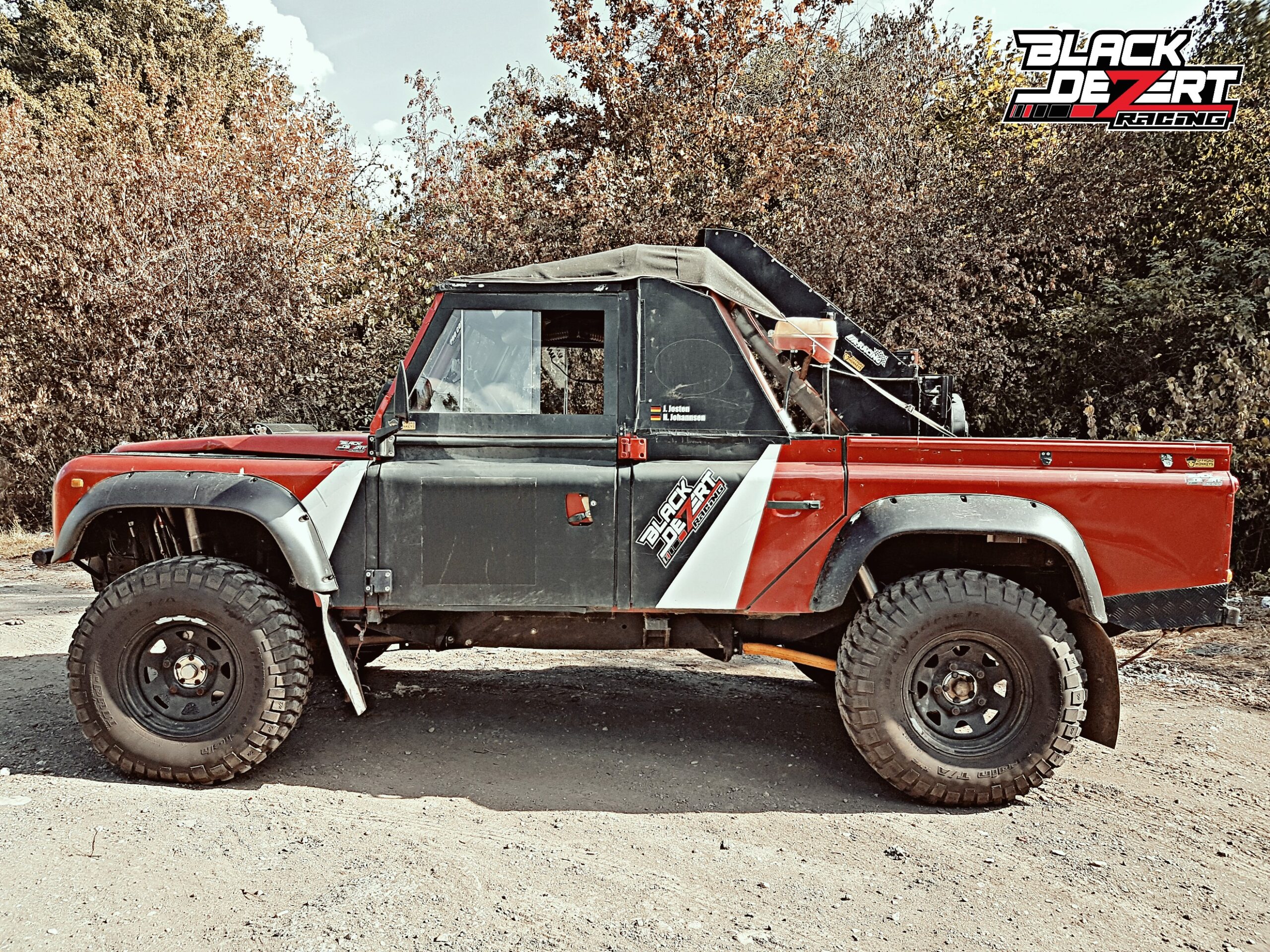
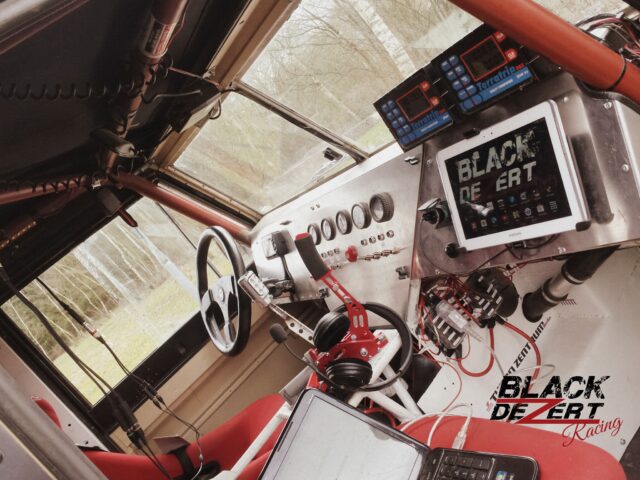
Ultimately, I love travelling; it’s my passion. In my engineering job, I had 45 days of holiday, so I was away every chance I got. I wanted to combine travel with my love of 4x4s, so I decided to build my dream overland rig. However, at that point, I wasn’t really sure where to go first, so I built the Defender and then had to decide where to take it. That’s when I decided on the Pan-American Highway.
The Build
Where to start? The Defender is assembled using multiple vehicles, including the chassis from a 1987 Land Rover OneTen military version, features 1997 Defender solid axles, disc brakes, coil springs, and a 1969 Land Rover Series II aluminium ambulance body. I asked Jannis why the Defender was the base for his overland rig.
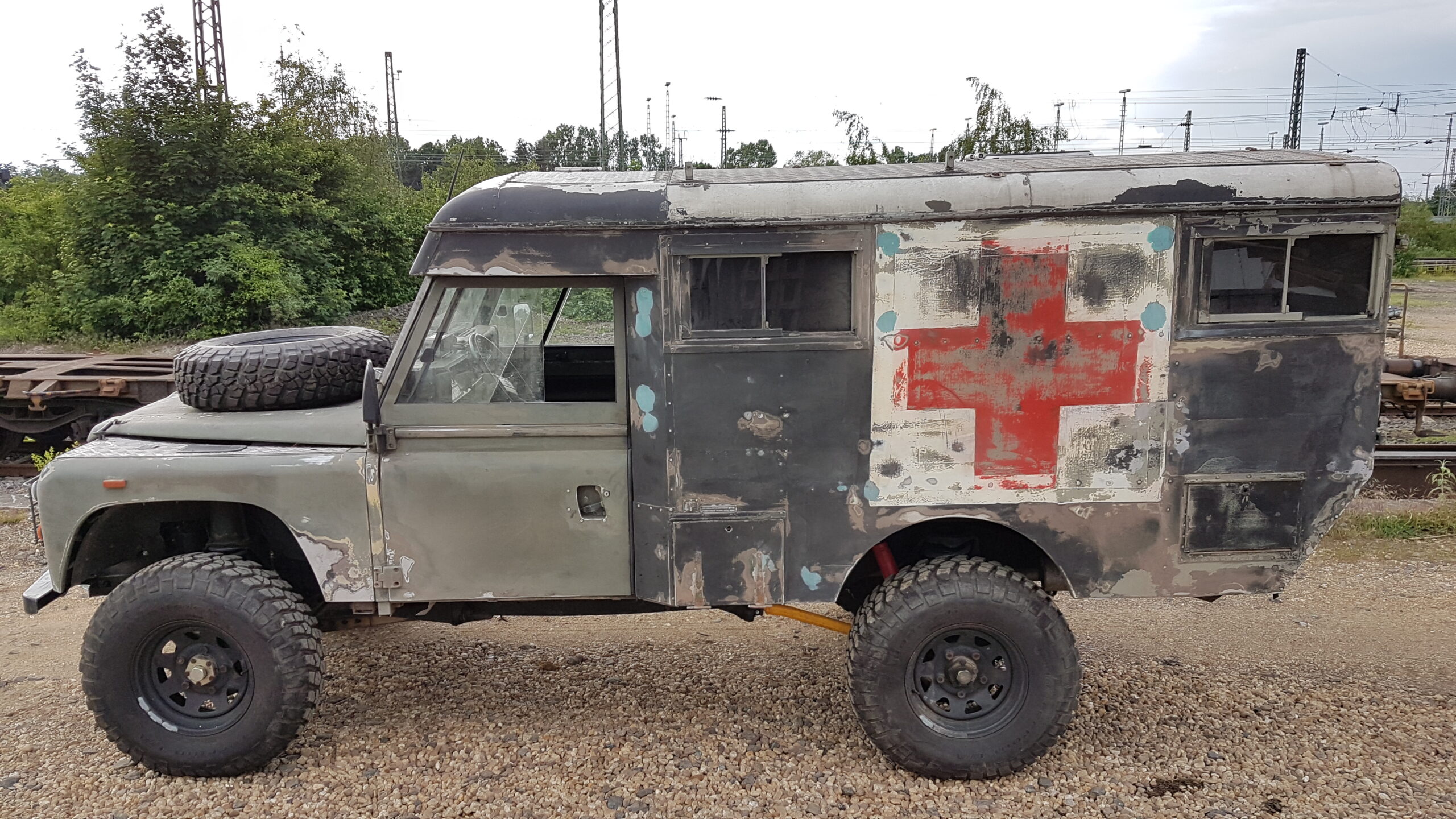
Jannis: Crucially, I know everything about the Defender from the ground up, but also, I just love the style. Additionally, I knew I could use this base to create a capable yet budget-friendly overlanding vehicle. I knew I didn’t want a roof tent, so I had to somehow integrate comfortable living accommodation without jeopardising the Defender’s off-road credentials. I discovered a guy in Luxemburg driving a 1975 Land Rover Ambulance, and that was the impetus for my build. I located a 1969 Land Rover Ambulance body used by the English army and managed to retrofit this to a newer Defender body. I did all the work myself—I even handmade the gear linkage! It’s the transmission from a rear-wheel-drive BMW, so I developed a little intermediate prop shaft and mounted the transfer box at the end of the chassis. The mechanicals worked well, but I had so many problems with the electrics. The 3.0 BMW engine isn’t great for overlanding; if the alternator even sees water, it cuts out. Nevertheless, the concept worked and amalgamated comfortable living conditions with a highly capable 4×4 vehicle. It also doesn’t look too expensive and blends in overseas, which is a good thing.
How long did the build take?
It was stressful. I gave up my engineering job and was working on the car 12 hours per day for six months whilst also doing part-time gardening. I was so tight for time that I couldn’t finish the build before I left, instead continuing the process in South America. Honestly, it was madness. That said, I don’t think any overland vehicle can be properly tested in Europe alone. You need the intense heat, gravel roads, washboard, and potholes you find in places like South America.
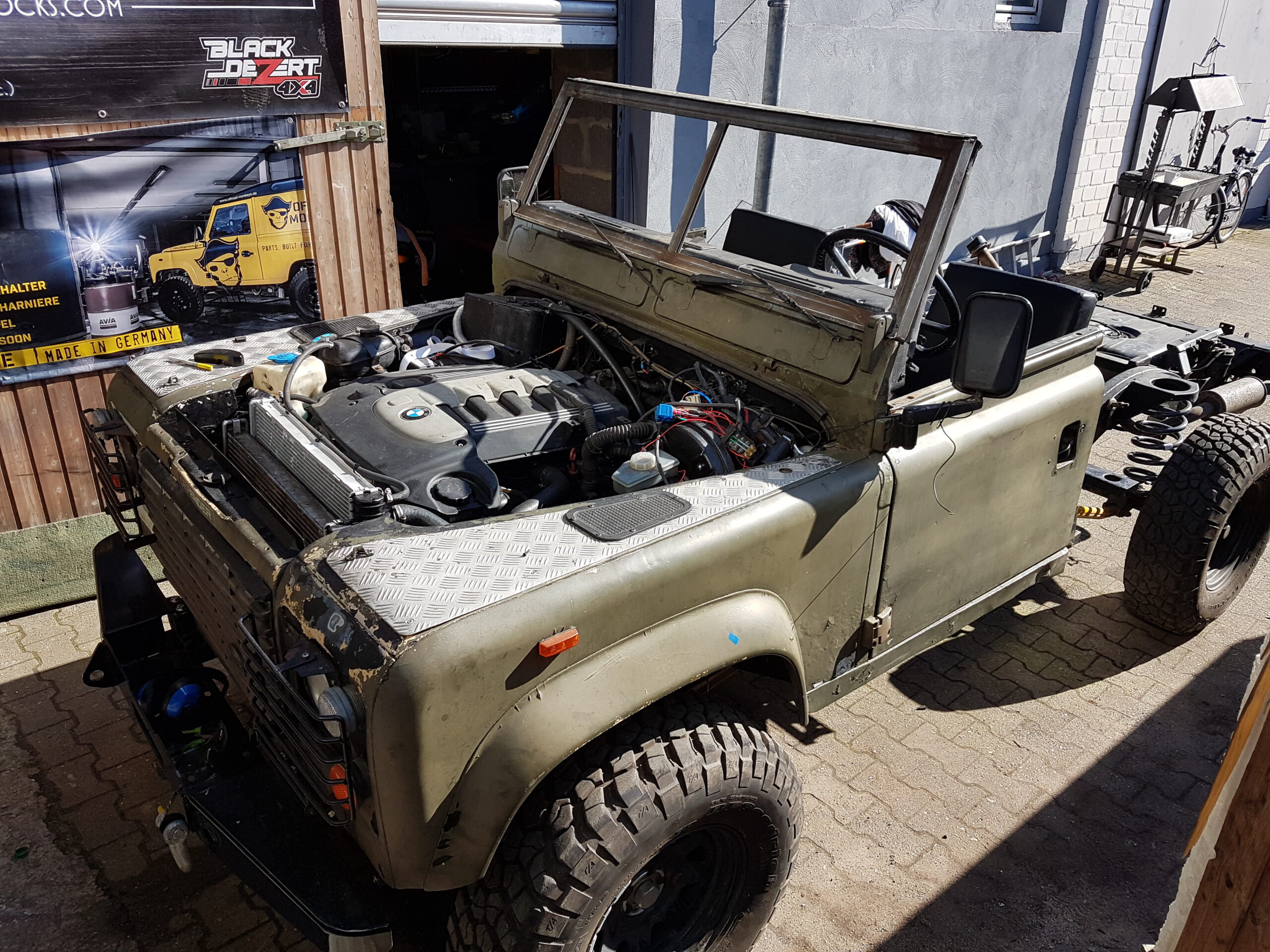
Nonetheless, I had over 150 breakdowns; it drove me absolutely crazy. I had many tools and spare parts, soldering electrics, fixing things constantly. The big lesson is keeping the vehicle as stock as possible because the manufacturer tests the stock setup thoroughly to ensure everything works well. Furthermore, mechanical and electrical issues on the road are easier to diagnose when you’ve left everything largely standard. The only reason I built everything this way was money—I had a budget of just $12,000 (€10,000) to build my dream overland vehicle. It was thrown together, and all-in-all, it proved to be very capable, despite the electrical gremlins.
Suspension
One of the first things you notice is the Defender’s incredible suspension setup. The system was largely taken from Jannis’ Defender rally car but was reconfigured for the camper build. It consists of custom-tuned Profender 2.5-inch monotube shocks with external reservoir, 2-inch lift Terrafirm HD coil springs, hydraulic bump stops on the rear axle, and an array of strengthened rally hardware to support everything. The Defender isn’t without its issues, but the suspension arrangement proved to be absolutely dependable and one of the most impressive I’ve seen.
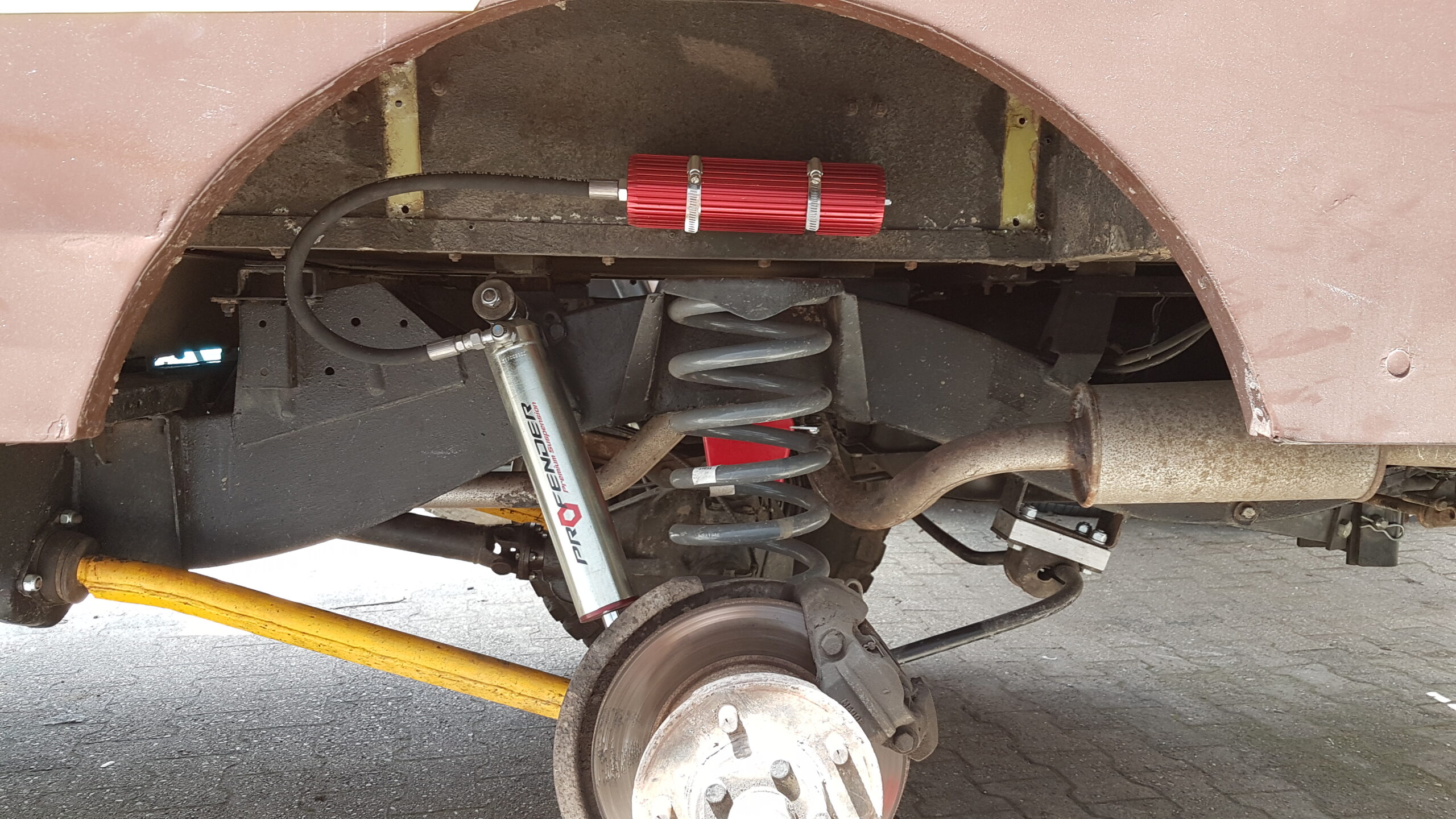
Jannis: The roads in South America can be quite challenging, and they’re often unmaintained. It’s important that your suspension setup can handle a heavy overlanding vehicle on brutal roads. The rally spec shocks on the Defender were perfectly tuned to the vehicle weight and meant I could go as fast as I liked on rough roads. Rated suspension is essential; it provides safety and dependability when the going gets tough.

Engine and Drivetrain
A 3.0-litre BMW M57 turbo-common-rail-diesel 6-cylinder aluminium block is the beating heart of the build and provides 245 horsepower and 510 newton-metres of torque. This is connected to a BMW RWD 5-speed manual transmission, an LT230 LR remote transfer box with an intermediate prop shaft, self-made gear shifter linkage, and steering box. Jannis additionally created a stand-alone ECU and body loom, so the engine can be run independently of the vehicle, providing it has fuel and power. The engine itself proved to be a reliable workhorse, but the fragile electrics accompanying it were unsuitable for overlanding (after all, it was designed for a two-wheel-drive BMW 5 series sedan).
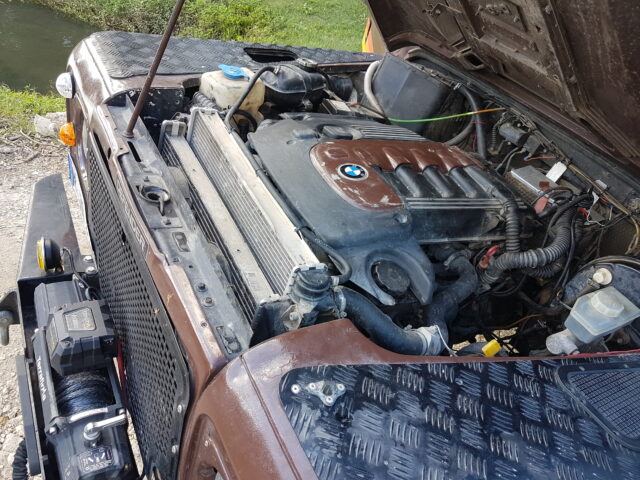
Jannis: It’s an aluminium block, light and pretty robust. It’s very fuel-efficient and delivers around 100 kilometres for every 12 litres of diesel, which means fantastic range when paired with my second fuel tank. It provides excellent power and torque for both highway and technical driving, and it’s cheap on the used market in Germany, costing me just 700 euros. It’s combined with the Land Rover transfer box, prop shaft, and axles, and other than the electrics, it was great. There was one occasion in Mexico, in the middle of a cartel area, that the Defender broke down in a car wash. I was on that forecourt for over 30 hours trying to diagnose the problem, and it was just a nightmare. It ended up being a bad solder between the anti-theft device and ECU, and once repaired, the engine burst into life. Electrics are bad enough in a stock vehicle, but when you’ve done it all yourself, no mechanic can help you. Consequently, the BMW engine will be replaced with a non-electrical Land Rover 300Tdi (i.e., one of the most dependable engines the company’s ever made). I’ll be opting for a South American version, which offers greater volume and torque, a different turbo, and, crucially, no complicated electrics!
The Camper
Simple, lightweight, and functional. I interview a lot of overlanders, and these three core principles are often the foundations of their camper buildout. Coco Overland is no different, showcasing a simple yet tasteful wooden interior with plenty of storage but crucially robust and relatively lightweight. This interior was put together in just two weeks and proves that an overlanding buildout doesn’t have to be wildly complex and expensive to be comfortable. The basic layout consists of a slide-out bed (fixed on the left as a single, but extends to make a double), wooden closets and countertop, Mobicool MCF40 compressor fridge, 40-litre wheel arch water tank, and MaxFan vent. Internal electrics consist of two 100Ah AGM batteries and a 160-watt solar panel, which also powers external auxiliary LED lighting for campouts. There’s an outside shower and an amazing 270-degree Alu-Cab awning.
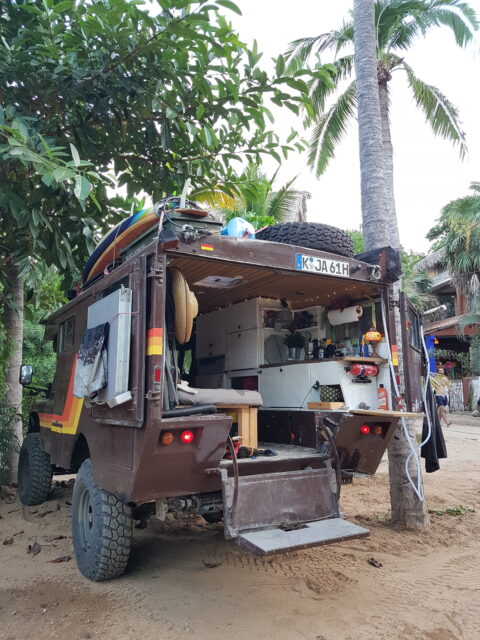
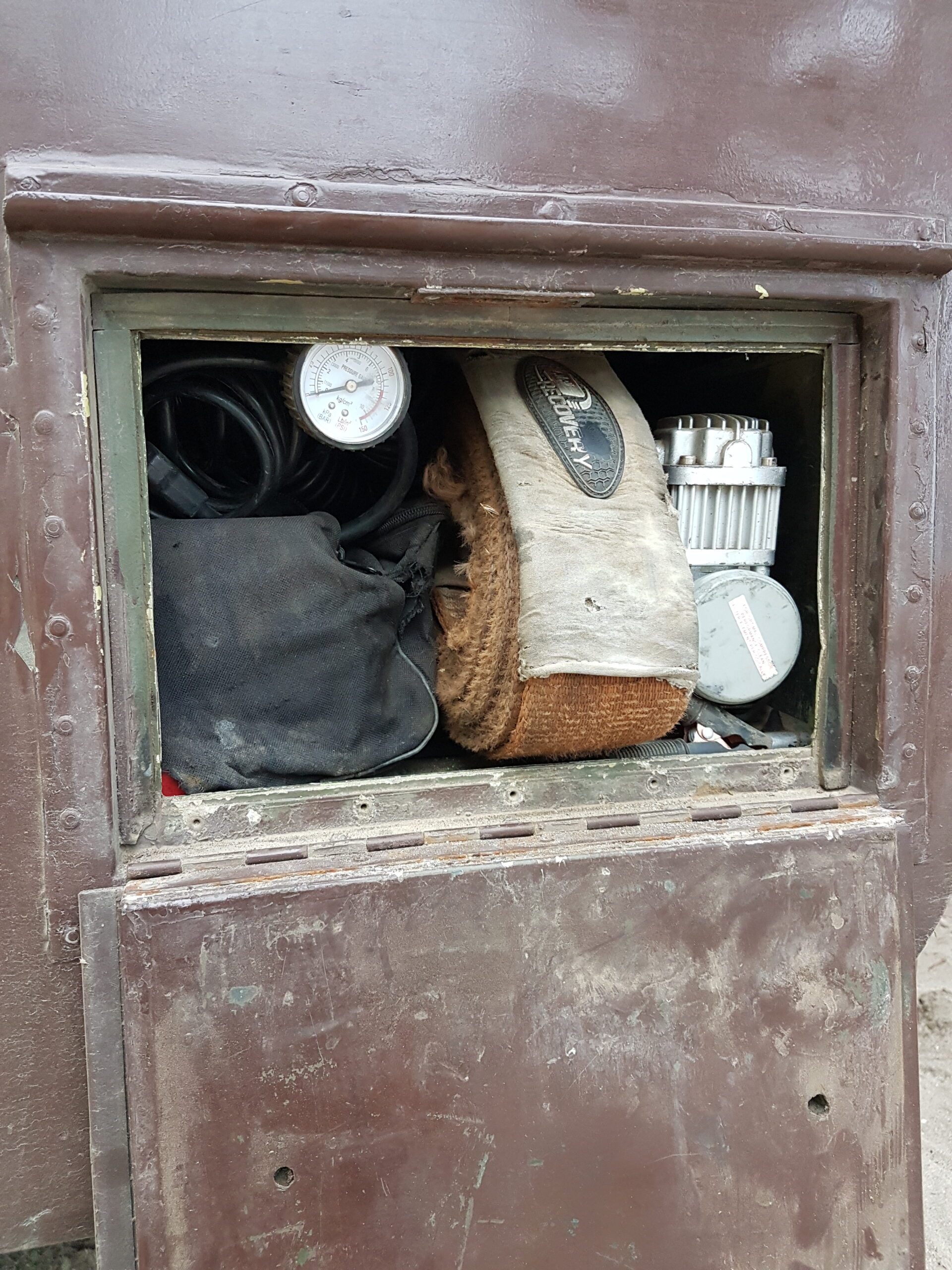
Jannis: The Alu-Cab 270 awning is the most expensive item on my truck but incredible and essential for hot climates. The ambulance body shell works great and provides plenty of space for the camper interior, which is simple but functional. I also have a countertop made from a fallen tree and a small sink, which makes it feel really homey. At the end of the day, you’re going to spend a lot of time inside, so it’s important to have a comfortable setup that makes you feel at home.
Recovery Gear
Jannis is quick to point out the Defender’s shortfalls, but he couldn’t say enough good things about its all-terrain performance. The epic suspension setup works in unison with a Detroit Truetrac limited-slip differential in the rear axle and a 100-percent Schwarz air locker in the front axle to create a rig that’s truly remarkable off-road. In addition, Jannis has a 2-cylinder air compressor, 12,000-pound Terrafirma A12000 winch with synthetic rope (mounted to a Terrafirma commercial winch bumper), winch pulley, recovery straps, tree strap, sand boards, and tire repair kit.
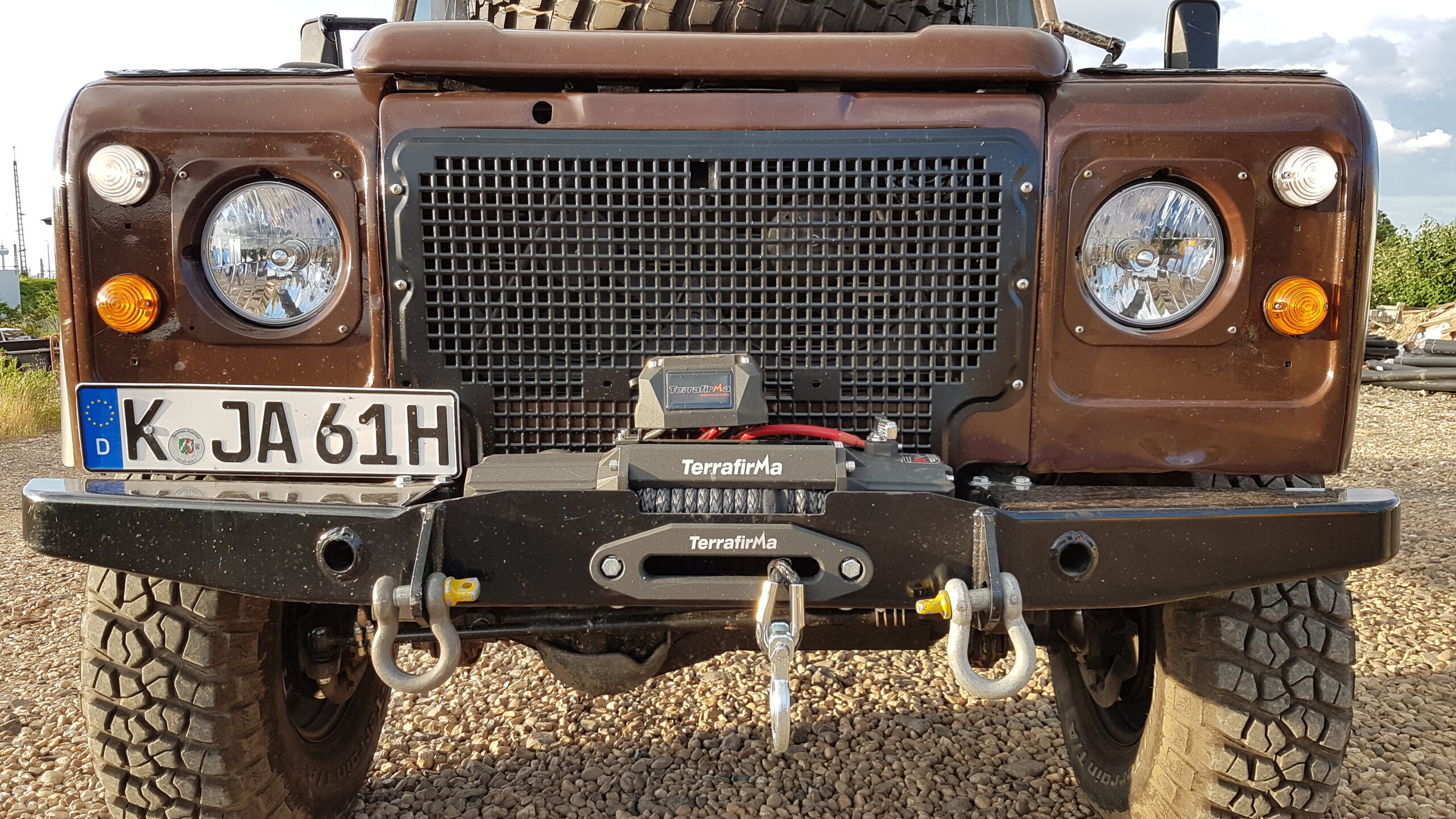
Jannis: The winch was a must for my adventures and gave me the confidence to venture into the jungle solo. However, with the diff-locks, I was able to reach some truly incredible places without needing any of my recovery gear. In fact, most of that equipment was used rescuing other vehicles.
Adventure
Can you tell me about your overlanding adventure in South America?
My original plan was to travel from the Burning Man festival to Argentina, and my first idea was to do it alone. However, I met a girl in Germany before leaving, she ended up in California, at Burning Man, and we fell in love. We travelled together, but when I got to Mexico, she had to fly back, and I was alone. I was told about this secret surf beach in Baja, and there I met amazing like-minded people. It took one day to decide we should all travel together, and I convinced them to head to the Mexican mainland for adventures. We did this for two months, cooking for each other on my iron wok, lots of nights around the campfire. They were looking for the surf, so we drove down the Mexican coastline, exploring remote beaches. The mainland can be dangerous, but it meant we got to see some truly incredible places, which I’m sure very few tourists see. We swam with turtles and dolphins, camped under the stars in the true wilderness. The cartels were a concern, but corrupt police were the biggest issue. They stop you all the time, asking for money, but you just negotiate and show them your empty wallet. It’s an uncomfortable feeling when you realise no-one’s your friend, that you’re alone out there.

Once I left Mexico, the group separated, and I headed to Guatemala. But on the way, the transmission got stuck in second gear. It took 35 hours from Mexico to Guatemala at a max speed of 18 mph (30 kph). I found some amazing mechanics, but the gearbox was so seized it took two days just to open. I had to go into dangerous areas to find parts but finally got it going again. I went on to do every country in South America, including Costa Rica, Panama, Nicaragua, Honduras, El Salvador, etc. My travels ended in Colombia when I ran out of money, which was lucky as I only just beat Covid-19 home.
Do you have any words of wisdom for someone considering their first overlanding trip?
It’s important to choose the right overland vehicle for your objectives. I thought I could repair everything, but it was a real drain. Leave it as stock as possible; don’t tune it. Moreover, trips like this generally take longer than expected; remain flexible, and allow time for the unforeseen.
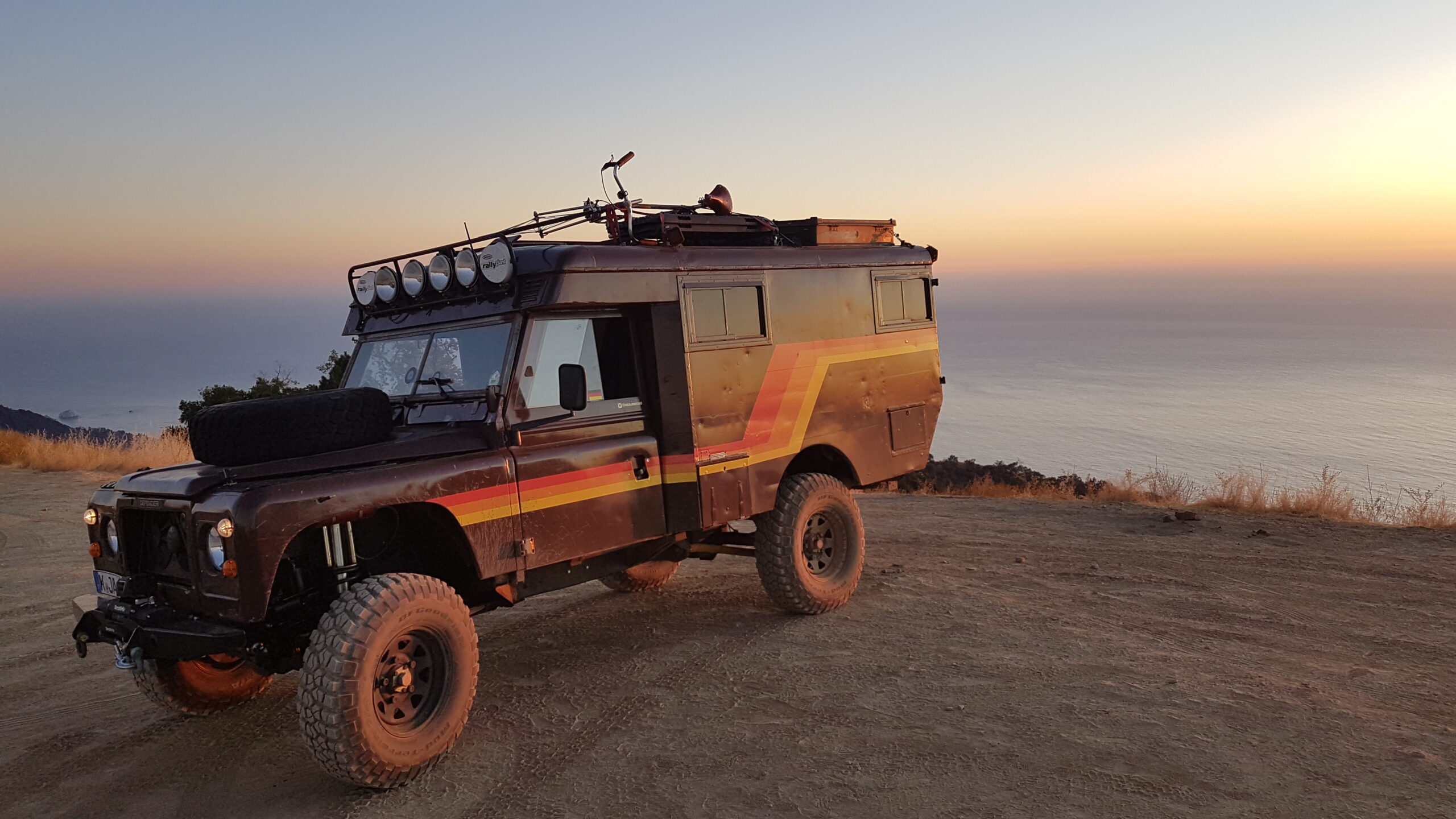
Tell me all about Ellie Vans.
I quit my engineering job at Ford, but I knew exactly what I wanted to do when I returned from my travels. I put together my business plan for founding Ellie Vans in the back of the Defender during my trip, submitted it when I got home, and received a grant to start the business straight away. We build interiors that have that “Instagram” aesthetic whilst also being extremely well-made and functional. However, the next step is building overland vehicles with our beautiful interiors, and we’ve already started work on a Toyota Hilux.
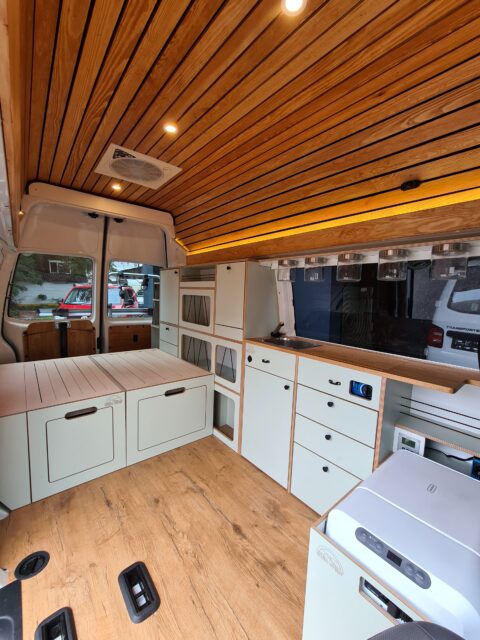
Where can we find you?
ellie-vans.com
Instagram: coco.overland / ellie.vans
Facebook: Ellie Vans
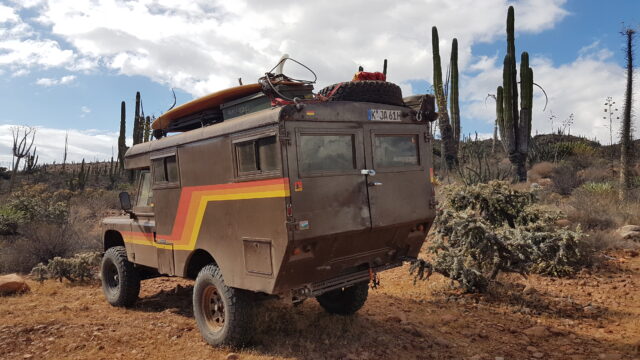 Specifications
Specifications
1987 Land Rover OneTen military version (only chassis + front section)
1969 Land Rover Series II ambulance body (aluminium)
1997 Defender solid axles with disc brakes and coil springs
Power
3.0l BMW M57 turbo-common-rail-diesel, 6-cylinder aluminum block 245 horsepower, 510 newton-metres
Stand-alone ECU and body loom
BMW RWD transmission, 5-spd manual
LT230 LR remote transfer box with intermediate propshaft
Self-made gear shifter linkages and steering parts
Suspension and Drive
Profender 2.5-inch monotube shocks with ext. reservoir and custom tuning
Hydraulic bump stops on the rear axle
+2-inch Terrafirma HD coil springs
Heavy-duty suspension components
Detroit Truetrac limited-slip differential in rear axle
100-percent Schwarz air locker in the front axle
Axle truss
Wheels and Tires
Dotz Dakar 16-inch steel wheels
255/85R16 BFGoodrich mud-terrain tires
2 x spare wheels
Recovery and Armor
Terrafirma commercial winch bumper
Terrafirma A12000 winch, 12,000-pound with synthetic rope
1 x winch pulley
2 x recovery straps
1 x tree strap
2 x recovery tracks
CB radio
Tire repair kit
Accessories
2-cylinder air compressor
Auxiliary fuel tank
Auxiliary LED spots
Iveco Daily radiator with 4 el. auxiliary fans
160-watt solar panel
2 x 100Ah AGM battery
Outdoor shower
Third middle seat
Alu-Cab 270° awning
Full wooden camper van interior:
- Slide-out bed
- Compressor fridge Mobicool MCF40
- Wooden closets and countertop
- 40l fresh water wheel arch tank
- MaxFan vent
Fuel Capacity
135 litres
Water Capacity
40 litres
Weight
2,700 kilograms, including driver and payload
Our No Compromise Clause: We carefully screen all contributors to make sure they are independent and impartial. We never have and never will accept advertorial, and we do not allow advertising to influence our product or destination reviews.


